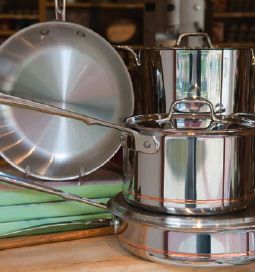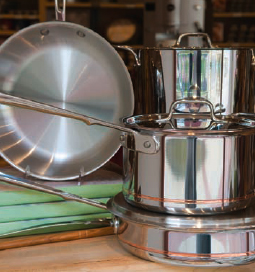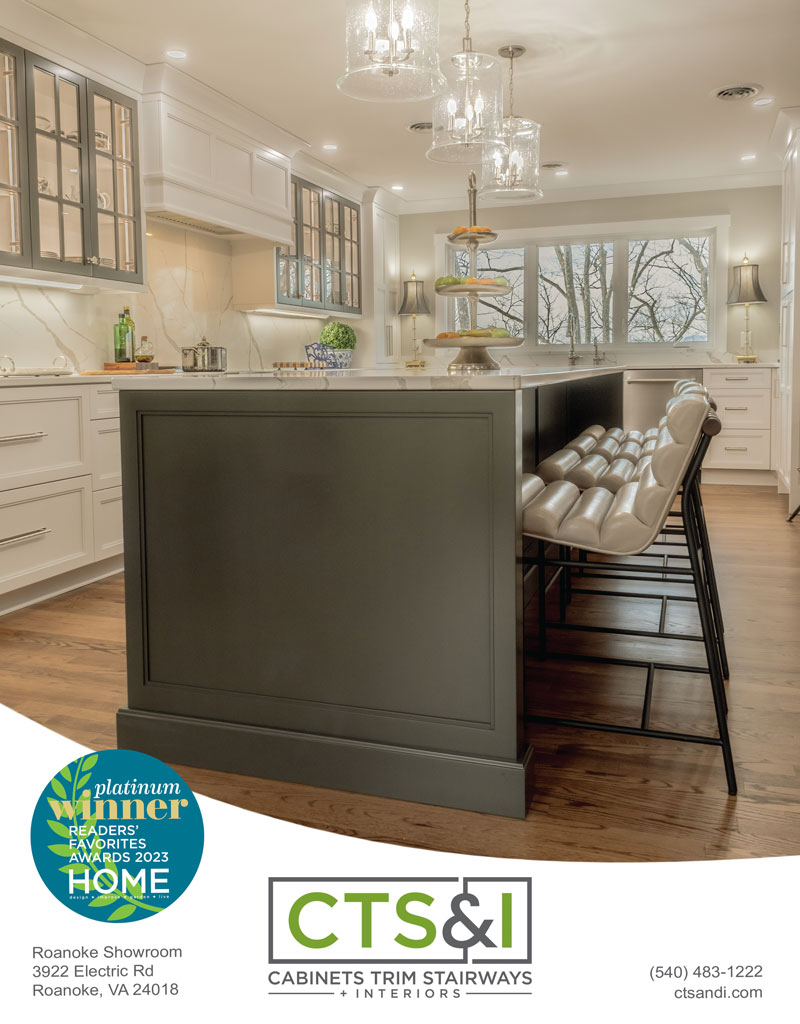Cookware Conundrum What Should I Buy?

 By Erin Parkhurst
By Erin Parkhurst
For cooks who have decided to cast off old, worn-out pots and pans in favor of gleaming new cookware, a veritable feast of high-quality products awaits.
Debi Shawcross, owner of Signature Menus (www.signaturemenus.com), chef, instructor, and author of Signature Salads and The Supper Club Cookbook (coming in 2009), says clients ask her all the time what they should buy to replace their old pots and pans. Her best advice? “You get what you pay for; it’s worth the investment to buy quality cookware.” Though more expensive, it has staying power: Shawcross has owned some of her pieces of stainless steel for 18 years and they’re still going strong.
High-quality cookware comes in many forms including cast iron, enameled cast iron, anodized aluminum, stainless steel, and copper. But how do you choose? Prices for sets of stainless steel or hardanodized aluminum start at $500 on the low end and go up to $1,500 and beyond on the high end; a set of hand-wrought copper is even higher, starting around $2,000. Knowing something about each surface can help you invest wisely by selecting pieces that meet your needs.
Cast Iron
Known for its heat retention and durability, cast iron cookware is great for searing meat, slow cooking and frying because of its ability to withstand high temperatures. It takes longer than other surfaces to heat up, but once it does, it holds its heat well. The Cookware Manufacturers Association (www.cookware.org) advises that cast iron cookware be seasoned in order to prevent rust and ensure top performance. Cast iron should not be cleaned with soap but simply wiped with a damp paper towel after each use and dried immediately.
Enameled Cast Iron
A layer of hard enamel over cast iron creates cookware that is also very durable. Enameled cast iron retains heat
well and distributes it evenly, making it great for slow-cooking casseroles or even bread. Unlike cast iron, the process of seasoning is not necessary with enameled cast iron, and it has a naturally nonstick surface. Like cast iron, however, enameled cast iron should not be left to air dry, though you may clean it with warm soapy water.
Anodized Aluminum
Aluminum is an excellent conductor of heat, but is not safe in its pure form. Naturally soft and pliable, it is treated in an electro-chemical process known as anodizing or hard anodizing which creates a tough shell to protect food from the base layer. This process makes it safe and long-wearing, and allows the aluminum core to heat the piece evenly. It should not be confused with a non-stick coating however; the anodizing process actually oxidizes the surface of the pan rather than adding something to it. Hard-anodized cookware should be hand-washed in warm soapy water to ensure longevity.
Stainless Steel
Stainless steel does not conduct heat as well as other materials, but is a highly desirable cooking surface because of its appearance, durability, corrosion resistance, and ease of cleaning. It is used in cookware as a “clad”—a composite material created to combine the benefits of its individual components. When bonded with a superior thermal conductor like aluminum or copper, this surface is great for all types of cooking. When purchasing stainless steel cookware, look for pieces with thick layers of aluminum and/or copper on the bottom or sandwiched between layers of steel; these will provide the best thermal conductivity. Stainless steel is usually dish-washer safe, though hand-washing in warm soapy water is the best way to keep it fresh.
Copper
The undisputed Cadillac of thermal conductors, copper provides the most even heating. Copper heats and cools extremely quickly, offering cooks an opportunity for very precise timing. Copper, like aluminum, must always be lined with another material, usually stainless steel. Used alone it can be harmful; certain foods react to it and may become toxic, so be sure to look for pieces with a stainless interior. Copper requires special care; it must be
hand-washed and polished often to keep it looking bright.
Nonstick
Nonstick refers to coatings that may be applied to various surfaces including stainless steel and anodized aluminum. Nonstick coatings promise easy clean up, but are not for cooking at high temperatures; at 500 degrees nonstick surfaces may begin to release toxins, Shawcross notes. Most nonstick coatings are made of either silicone or fluorocarbon. Silicone-nonstick finishes will look shiny and are used in bakeware because they can withstand heat. Fluorocarbon finishes will be made with polytetrafluoroethylene, or PTFE. Touch the finish; if you feel tiny ridges, keep shopping—there is probably only one layer of coating. The most durable non-stick products will use three or more layers, and will feel smooth to the touch.
Shawcross says that when shopping for new cookware, “The first thing to look for is the weight of the pan.” Go for heavy-gauge, or thicker pieces. Her favorites? “Clads. Each surface has its own properties; when they are layered you get the best of both worlds.” Kathleen LeDoux, owner of Culina, “The Source for Serious Cooks,” a kitchen and book store, food store, and cooking school in Lynchburg, urges clients to begin by establishing a budget and deciding whether they want to buy a set, or individual pieces. She recommends looking for pieces with an even bottom to keep them from rocking on the cook top, and handles that are in proportion to your grip. When buying stainless, LeDoux suggests checking out the thickness of the copper or aluminum disc on the bottom of the pan. Copper discs should be a minimum of 1 millimeter thick while aluminum discs should be no less than 3 millimeters. LeDoux explains that even though a heavier disc adds weight, it will ensure that heat is dispensed evenly. If a whole new set is beyond your budget, Shawcross recommends starting with a few key pieces: a 12-inch sauté pan, a 5-quart sauce pan, an 8-quart stock pot (which can also double as a Dutch oven), and a 12-inch cast iron skillet for searing meat. Add on from there, and prepare to use your investment for a
lifetime of great cooking.






